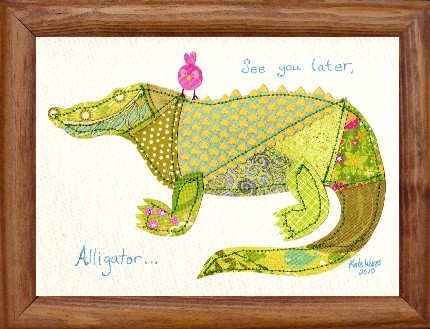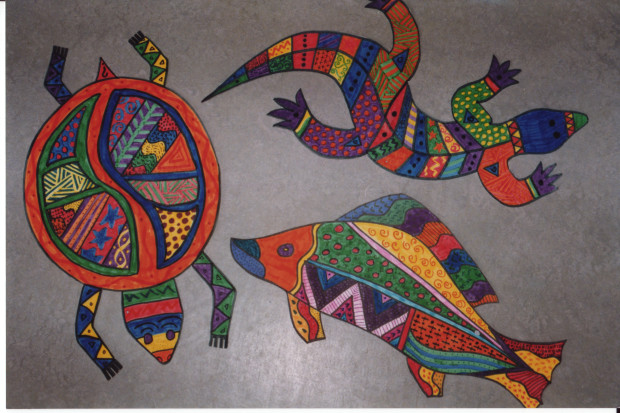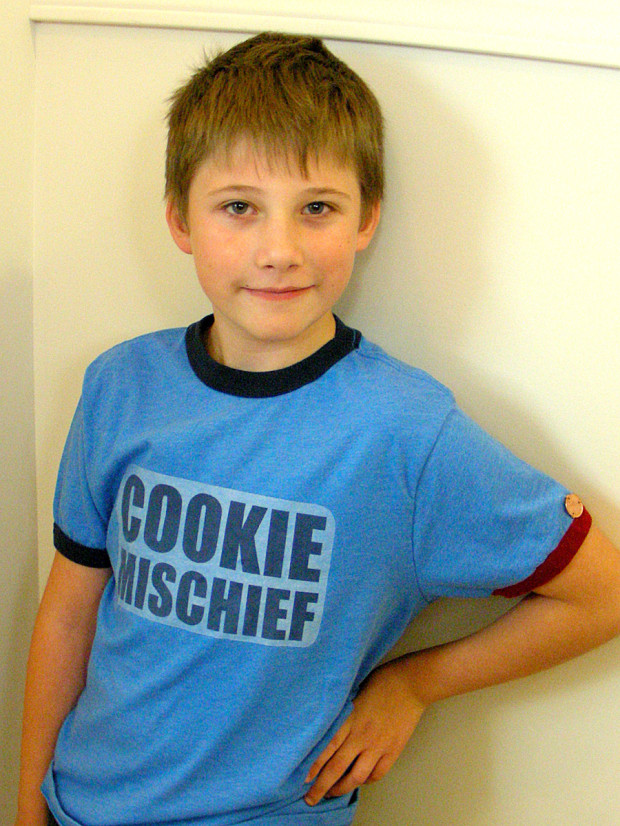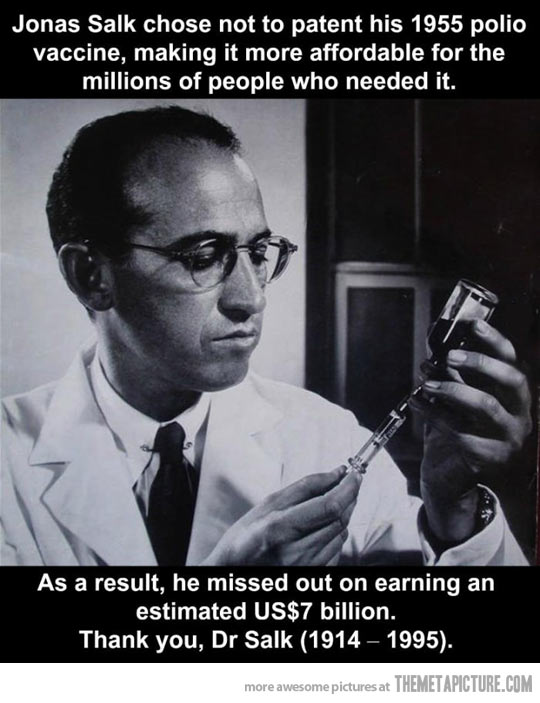The Originality Trap
Last night, I received an ETSY message from one Brenda Bannon-Gehrke, stating (and I quote): “I have a COPYRIGHT and a TRADEMARK filed with the United States Patent office for the name and use and design of ‘Quilty Critters’ and you are not allowed to use that name.” Etc. Etc. Et… Cetera…
So. As a courtesy, I took the time and edited the 5 ETSY listings, and even the 9 blog postings on this site, in which that particular combination of two words was used, and I changed them to read a more generic “quilt-ed critter/s” instead. I mean, it’s not as though my livelihood depends on those two words, or this specific combination of them, so whatever. I’m afraid I don’t have time or desire to research the exact details of copyright law in this case (i.e. would it have sufficed if I did not capitalize the phrase, or changed it to “quilty kritters” instead?) So fine, I concede. You’re welcome.
But it got me thinking about how insane this whole copyright thing has become. On one hand, ETSY encourages you to use as many descriptive words as possible to better market your goods – the kind of words that would “speak” to your ideal customer. And on the other… there’s this “queenartist” (Brenda’s ETSY handle), and others like her, who feel the need to OWN certain words, and the things which they have come to represent (even if only for a handful of people). It made me wonder how many other similar two-word combinations are actually copyrighted? Do I really have to research every possible combination that I might use before I list an item??? Before I say / write / share anything these days?!?!? In this age of everybody blogging / publishing / creating / branding / putting-themselves-out-there… not to mention sites like Tumblr, Pinterest, YouTube, and what not, where things are continually non-attributed… it will become increasingly difficult to protect such things. Won’t it? And more importantly, should it? Hmm.

One of the items in question, AKA “the suspect”.
I suppose rationally, I understand it. Everybody wants their piece of the pie, and they certainly don’t want to get Wozniak-ed out of their due share. If I were in her shoes, having a very specific THING I wanted to protect from getting ripped off and profited from, I may very well do the same thing. (My current lack of very specific knowledge about international copyright laws notwithstanding.) Goodness knows, there are enough skeevy people in the world trying to make a quick buck off of somebody else’s hard work, you are pretty much forced to protect yourself nowadays. (Which is why I’ve watermarked my originals, and only put up small images of them on ETSY.) But… really? Was she going to get all litigious, from another country no less, over the way I described my product in a listing header?
First of all, my paper collages are quite different that her fabric-and-notion creations – clearly, I am not trying to plagiarise her work. AND, one might even argue that the idea for my critters originated way back in the early 90s, when I was working at the Bird Sanctuary, long before the 2007 date of her copyright… Ahem. For me, it was just an off-handed term I threw together after I started making animals other than the “quilty birds“. Quilt-y (as in quilt-like) because they are not traditionally quilted with fabric. I suppose I could understand it if I was in some way taking business away from her, but fact is, I have yet to even sell one of these items online! In craft fairs (where names aren’t an issue), sure, but not on ETSY yet. And, yes. We’re talking about ETSY here, people. Where individuals craft individual items – not some factory where millions of replicas are being cranked out for profit. I just… don’t… get it.

My original quilt-like critters, in their earliest form, circa 1993.
A nice, non-threatening note saying “Hey, based on your creations, it’s clear you’re not trying to take advantage of me, but I just wanted to let you know that that phrase is copyrighted and I would really appreciate if you could change it…” would probably have been a more pleasant way of communicating her position. A position that, as you can guess, I am still grappling with a little bit, given the nature of the work. Does she really have the right to claim ownership of these little, stuffed, fabric animals and her name for them? How does that happen, exactly – the design aspect, at least? I’m pretty sure moms everywhere have been using scraps to put together toy animals for their children for centuries before Brenda started making them. And I’m pretty sure that at least some of her critters likely bear a remarkable resemblance to similar ones created by others that came before her. Heck, she even prides herself on working with recycled materials and vintage buttons – isn’t that a form of infringement in some way? Just how different do things need to be to avoid infringement? And what exactly is being infringed upon anyhow? These are the things I just don’t know.
Naturally, the whole Penny Tees thing came up. Here I am producing something quite clearly derived from another source – the iCarly show, which is no longer in production itself. Originally, I had made a handful of similar (but not exact replica) shirts for my kid’s themed birthday party grab bags. Then, due to popular response, I decided to make some extras to sell to the people who absolutely loved the show, who wanted to show their support for the show, but who couldn’t seem to find these items anywhere else. Who asked me to make them. Is it wrong of me – and the others out there who make these tees – to do so? When the shirts are quite similar to something seen on the show, but also different in colour-word-design-penny-construction combinations? When we’re not at all claiming propriety over the concept or idea? If Nickelodeon says “yes”, then I’ll stop making them, of course. But until then, I think they only help to support the show by making and keeping the fans happy.

One of my Penny Tees – how different is different enough?
Now, what about those fabric flowers I just made, based on a photo I saw on Pinterest? Is the person who made that particular flower, or took that particular photograph, going to come knocking on my door soon? Or what about that Tardis hat? The Breakfast At Tiffany’s-esque sleep mask? Or even the crocheted rocks that I’ve seen everywhere lately? Heck, most of the the things I am experimenting with these days are derived from somewhere else. And I know I’m not the only one who gets inspired to make something based on things they’ve seen elsewhere… isn’t that what Pinterest is all about? So where do you draw the line? Remember, this isn’t high art or literature or even a multi-million dollar venture here… it’s one-off crafts. Why do we make them? How do we make them? Is the question of uniqueness even an issue, given they are all hand-made? And what then becomes of the idea of propriety / ownership? Hmm.
So. There it is. Lots to think about on this quiet Sunday afternoon. What exactly is the difference between art and craft? Just how far should copyright extend in the craft arena? What is reasonable and productive, given this time of wide-reaching and easily-accessible everything? Is it better to share your contributions, going so far as to give instructions and directions so that others might try and emulate your work? Or is it better to hold on tightly to that which you imagine to be your original thought / idea / creation? (And I say “imagine” here, because I truly think that all things have to come from somewhere else, to some degree at least.) Personally, I think that if your work is powerful and meaningful, it will speak for itself. But I also think you have to be careful in how you present it, because yes, there are people who will try to take credit for the things that you do. So, yeah. What do you think about all this?
Anyhow. I am reminded of this recent Facebook meme-thingy about Jonas Salk. Not that arts or crafts save lives, necessarily, but still. 😉


2 Replies to “The Originality Trap”
Ugh!
I don’t really understand it either, and it could have been put a lot nicer to you.
I’m sorry this happened, Kate.
xo.
C’est la vie.